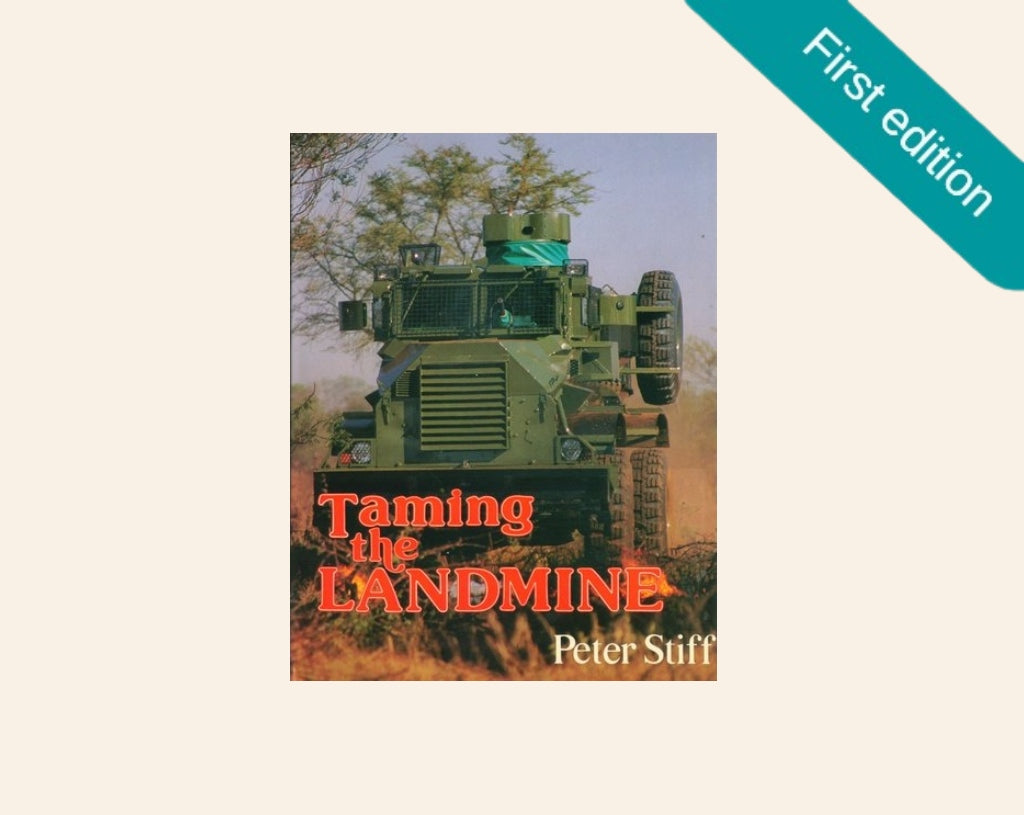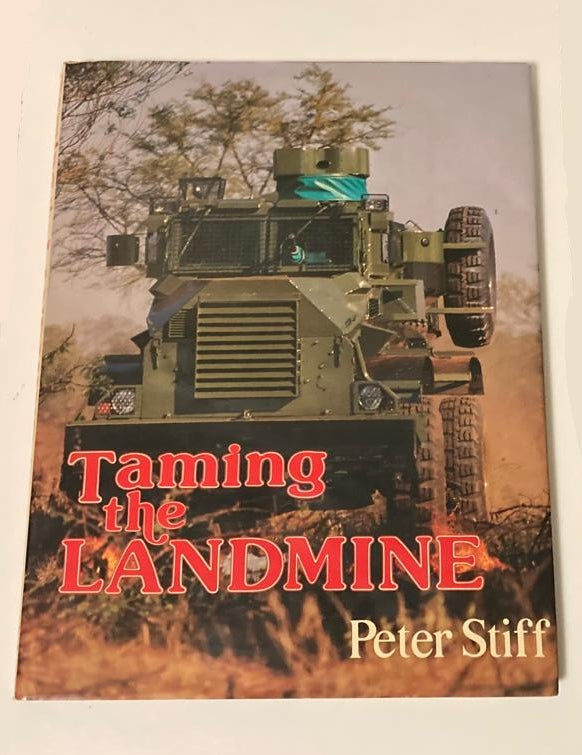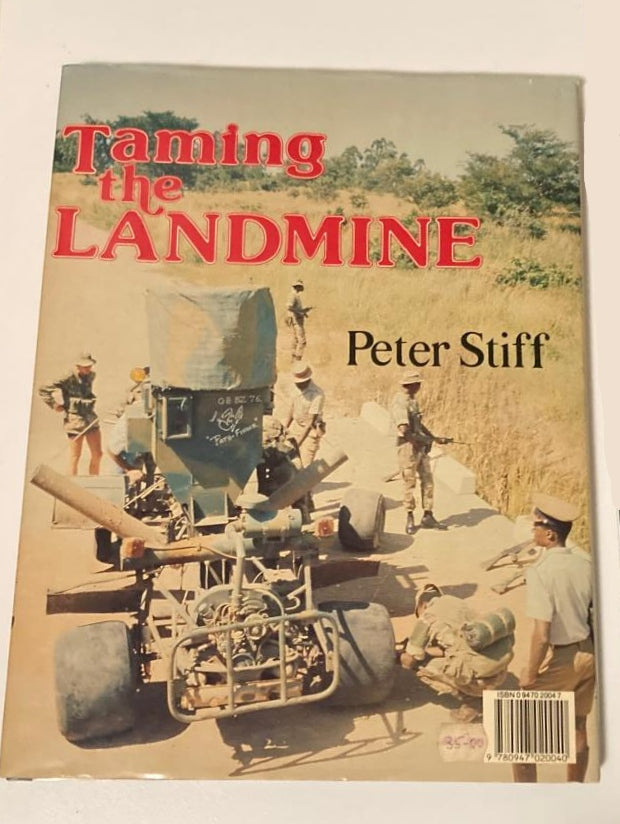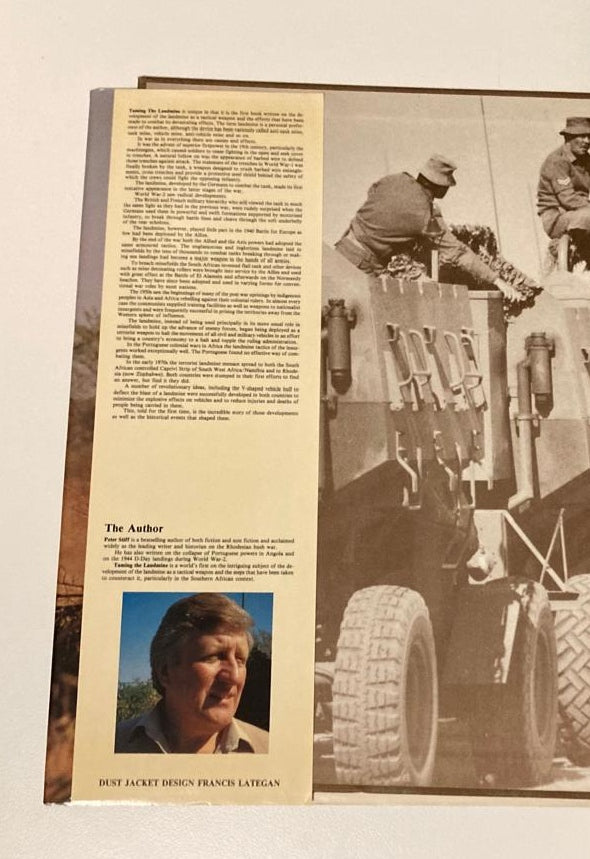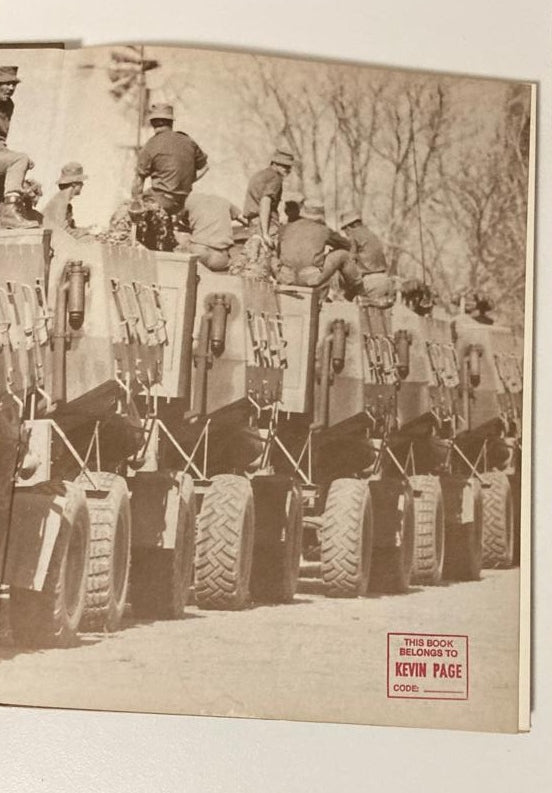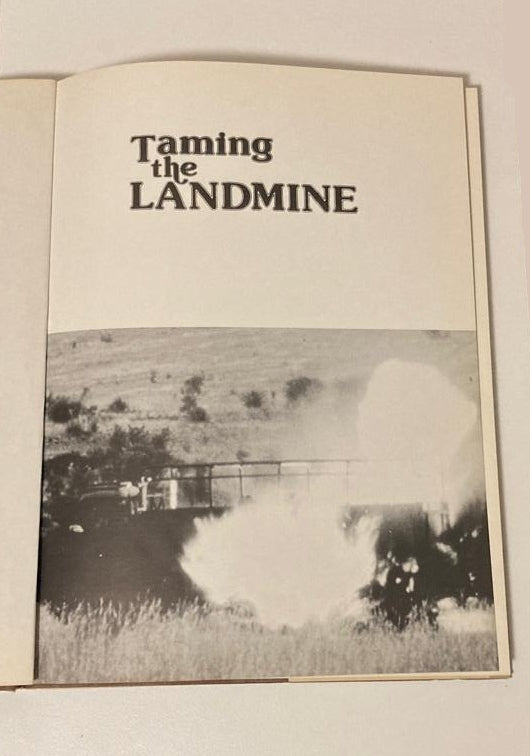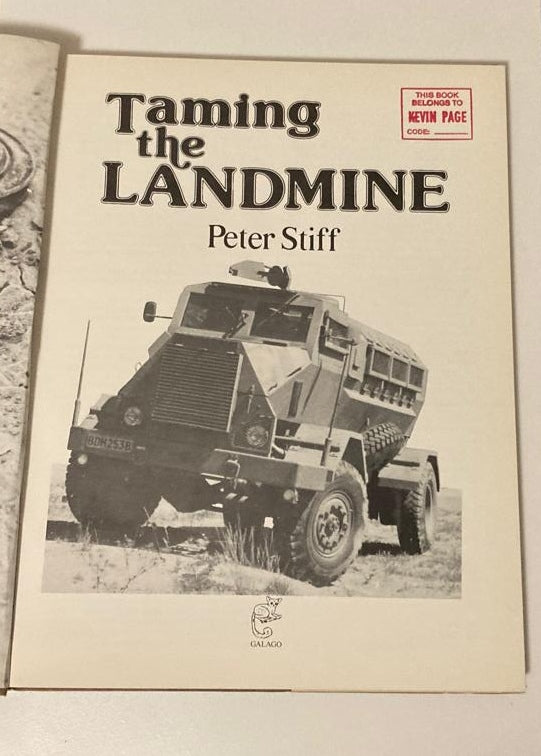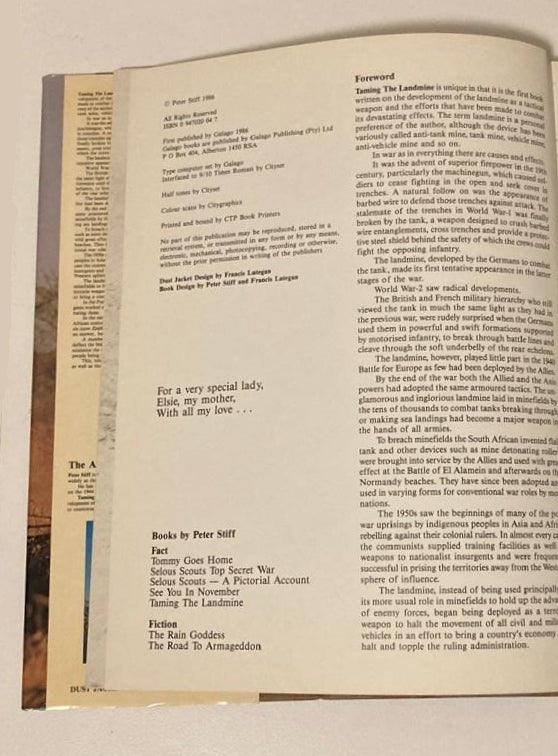The Story Station
Taming the landmine - Peter Stiff (First edition)
Taming the landmine - Peter Stiff (First edition)
Couldn't load pickup availability
Taming The Landmine is unique in that it is the first book written on the development of the landmine as a tactical weapon and the efforts that have been made to combat its devastating effects. The term landmine is a personal preference of the author, although the device has been variously called anti-tank mine, tank mine, vehicle mine, anti-vehicle mine and so on.
In war as in everything there are causes and effects.
It was the advent of superior firepower in the 19th century, particularly the machinegun, which caused soldiers to cease fighting in the open and seek cover in trenches. A natural follow on was the appearance of barbed wire to defend those trenches against attack. The stalemate of the trenches in World War I was finally broken by the tank, a weapon designed to crush barbed wire entanglements, cross trenches and provide a protective steel shield behind the safety of which the crews could fight the opposing infantry.
The landmine, developed by the Germans to combat the tank, made its first tentative appearance in the latter stages of the war.
World War-2 saw radical developments.
The British and French military hierarchy who still viewed the tank in much the same light as they had in the previous war, were rudely surprised when the Germans used them in powerful and swift formations supported by motorised infantry, to break through battle lines and cleave through the soft underbelly of the rear echelons.
The landmine, however, played little part in the 1940 Battle for Europe as few had been deployed by the Allies.
By the end of the war both the Allied and the Axis powers had adopted the same armoured tactics. The unglamorous and inglorious landmine laid in minefields by the tens of thousands to combat tanks breaking through or making sea landings had become a major weapon in the hands of all armies.
To breach minefields the South African invented flail tank and other devices such as mine detonating rollers were brought into service by the Allies and used with effect at the Battle of El Alamein and afterwards on the Normandy beaches. They have since been adapted and used in varying forms for conventional war roles by most nations.
The 1950s saw the beginnings of many of the post war uprisings by indigenous peoples in Asia and Africa rebelling against their colonial rulers. In almost every case the communists supplied training facilities as well as weapons to nationalist insurgents and were frequently successful in prising the territories away from the Western sphere of influence.
The landmine, instead of being used principally in its more usual role in minefields to hold up the advance of enemy forces, began being deployed as a terrorist weapon to halt the movement of all civil and military vehicles in an effort to bring a country's economy to a halt and topple the ruling administration.
In the Portuguese colonial wars in Africa the landmine tactics of the insurgents worked exceptionally well. The Portuguese found no effective way of combating them.
In the early 1970s the terrorist landmine menace spread to both the South African controlled Caprivi Strip of South West Africa/Namibia and to Rhodesia (now Zimbabwe). Both countries were stumped in their first efforts to find an answer, but find it they did.
A number of revolutionary ideas, including the V-shaped vehicle hull to deflect the blast of a landmine were successfully developed in both countries to minimize the explosive effects on vehicles and to reduce injuries and deaths of people being carried in them.
This, told for the first time, is the incredible story of those developments as well as the historical events that shaped them.
Condition
Condition
Very Good (VG): I may show some small signs of wear - but no tears - on either binding or paper.
Dimensions
Dimensions
L: 33.1cm; W: 25.6cm; H: 1.8cm
Weight
Weight
1.8 kg
Shipping
Shipping
We offer door to door shipping to anywhere in South Africa.
Delivery takes between 3 and 5 business days (weekends and public holidays excluded) depending on your location.
Read more about our shipping policy here.
Returns Policy
Returns Policy
We want you to be happy with your
purchase. If you are not completely satisfied, please notify us
within 7 days.
Read more about our return policy here.
Share
